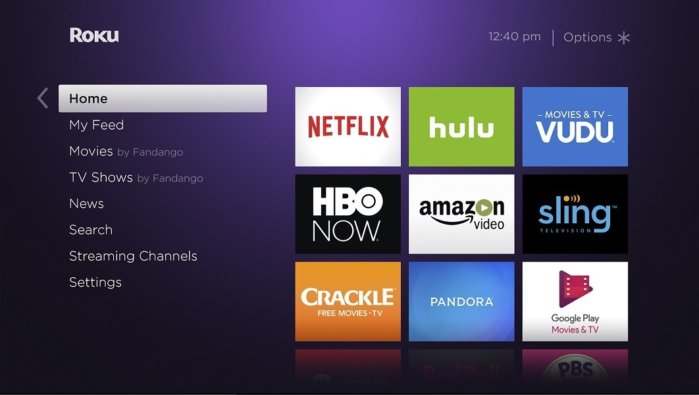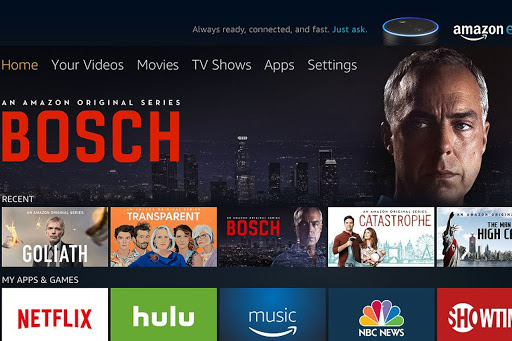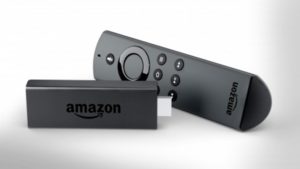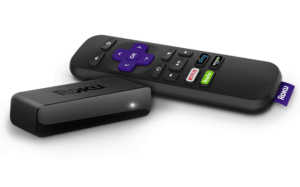Is the Amazon Fire TV Stick or Roku Stick better?
Amazon and Roku’s sticks are effectively the same thing, with similar features and services—you can watch Amazon Prime on Roku, for example. But there are some key differences.
Users already invested in Amazon’s product ecosystem will appreciate being able to control their Fire Stick through their Alexa or Fire Tablet. Meanwhile, Roku is a great option if you want to keep things simple.
And at the end of the day, Roku’s TV stick provides a better way for more users to get what they want.
Amazon Fire TV Stick pros and cons ![]()
- Small size
- 4K streaming
- Front-loaded Amazon apps
Roku Stick pros and cons ![]()
- Small size
- 4K streaming
- Difficult text interface
- Doesn’t fit well on some HDMI ports
Deals and promotions
While both Fire TV Stick and Roku Stick debut with a $50 price tag, you can get them cheaper by picking up discounted versions with fewer bells and whistles. You can get the more basic Roku Stick on Amazon for usually around $40.
How are Amazon Fire TV Stick and Roku Stick different?
Variety or voice control—the choice is yours
| Key features | Fire TV Stick | Roku Stick |
| Voice remote | ✓ | ✓ |
| 4K quality | ✓ | ✓ |
| TV streaming | ✓ | ✓ |
| Non-TV apps | ✓ | ✓ |
| Voice device integration | ✓ | ✗ |
| Niche channels and apps | ✗ | ✓ |
| VIEW ON AMAZON | VIEW ON AMAZON |
On a surface level, the Fire Stick and Roku Stick are almost identical. If you’re just getting into streaming, you should be happy with either one. If you’re a TV enthusiast or want more flexibility, Roku is a better buy. If you like to control your entertainment through a central system, then make the Fire Stick your pick.
Amazon Fire TV Stick vs. Roku Stick in depth
Voice Remote
Voice control is nice, but it’s one of those features that often seems like it’s trying to find problems to solve. Yeah, it’s great to say “Turn the volume down,” but if you’ve already got the remote in your hand, isn’t it just faster to press a button?
If controlling your TV with your voice is a sticking point, go with the Fire Stick—it integrates better with other Amazon electronics. Roku’s voice remote feels like more of a bonus feature.
But what about the 4K?
App variety
A streaming stick without apps isn’t a streaming stick, as our grandparents used to say. Or something like that.
Both Roku and Fire support hundreds of different channels and apps, ranging from the most common, like Netflix, to dedicated services and channels tailored to your interests.
Amazon loses a few points here for lacking some of the channels that Roku offers while front-loading their own Prime content and channels. Amazon also has a lot of fluff channels dedicated to things like photo viewing, music playing, and games—things that you can do easier on literally any other device you own.
Amazon Fire TV Stick apps
- ESPN for Fire TV
- DPReview
- Pac-Man 256
- Spotify
- Netflix
Roku Stick apps
- Sci-Fi Movies
- Drama TV
- The Economist Films
- Popcorn Flix Comedy
TV and movies not enough? Both sticks support a variety of other apps ranging from photo viewing to games. Roku’s game library (with fewer significant titles to draw on) is less fleshed out than Amazon’s, which has more mainstream publishers in their inventory.
Interface and user experience
The interfaces and overall user experience for the two sticks are pretty similar, although Amazon’s is a little more difficult to add and find external services.

Roku’s navigator
Roku’s home screen is clearly organized and laid out, with easy access to additional movies, shows, and apps below your own channels and Roku-featured shows and movies. “Streaming Channels” can be a little misleading—it’s basically any other app on the device.

Fire’s navigator
Fire’s home screen prioritizes Amazon Prime offerings, making it harder to get to services outside of Amazon’s existing services. The UI also feels more cluttered and constricted, with a top menu that’s more difficult to navigate around. Fire does have a “recently watched” list that makes it easy to jump back into your latest binge, an option sorely lacking on Roku.
Final take
Amazon Fire Stick feels like a designer house—a shiny, sleek device with a shiny, sleek interface. But with that designer aesthetic, you lose a little personalization and ease of use. Roku, on the other hand, gives you more viewing options in a less shiny package.
The things that Fire TV offers—namely, voice control and integration with other Amazon products—isn’t enough to overcome Roku’s wider variety of TV and movie options. Roku has a bevy of different channels available for free, with many focusing on niche interests ranging from HGTV to social commentary films of the ’40s and ’50s.
Ultimately, bells and whistles in a pretty package can’t compete with simplicity and variety, and that’s why Roku takes the title home in this Battle of the Sticks.
Amazon Fire TV Stick vs. Roku Stick: FAQ
What is the difference between Roku and a Fire Stick?
Effectively none, although Roku has more channels and viewing options than Fire and Fire provides better integration with Amazon devices and services.
Is Fire TV better than Fire TV Stick?
The main difference between the Fire TV and the Fire TV Stick is that the former is a full set-top box, not a stick. That basically means the Fire TV has more storage and more power, which would typically make it a better (if more expensive) choice—but it’s been discontinued.
If you want a set-top box from Amazon now, you’ll need to check out the Fire TV Cube.
Can you get local channels with Roku?
Short answer: yes. Long answer: yes, by subscribing to a TV streaming service (Hulu + Live TV, Sling TV, etc.) that provides local channel options.
Is there a monthly fee for a Fire TV Stick or Roku?
There’s no fee for the sticks themselves, but many of their more popular apps like Netflix or fuboTV require monthly subscriptions. They range anywhere from five to 50 dollars.
Can I use a 4K Fire Stick on a regular TV?
You’re in luck! While your standard- or high-definition TV might not be able to show you that 4K quality, as long as it has an HDMI port, it’ll be compatible. (Don’t have an HDMI port? Consider one of these dongles to adapt your current ports.)
Can Alexa control a Fire Stick?
Yes, by linking your Alexa and Fire Stick. Amazon provides a handy-dandy walk-through for it.
Can you use Roku on a non-smart TV?
Yes! In fact, that’s the idea behind Roku and Fire Sticks—they take your conventional “dumb TV” and give it smart upgrades.
Can I use a Fire Stick or Roku without internet?
No, both require a persistent network connection to get content. Because neither have internal storage capacities, there’s no way to download shows or movies to the devices.
Can I watch live TV on Roku?
Yes, but only with a subscription to a TV streaming service like fuboTV or YouTube TV.
Can I use Fire Stick without Alexa?
Yes, although it might be nice to get home and have Alexa start up your favorite show without having to go through all of the Fire Stick menus.


